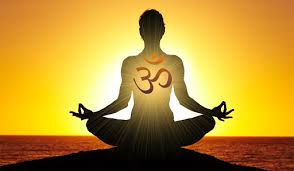The Importance Of Breath.
- Victoria Heritage
- Mar 24
- 4 min read

In Yoga, breath is crucial in not only a physical sense, to deepen the stretch or hold a pose for longer, but to also connect the mind and body and promote relaxation.
The act of Yoga breathing is also known as PRANAYAMA which is the practise of conscious control and regulating of your breathing to enhance your natural energy or "Life Force" (also known as PRANA) and deepen physical and mental well being.
Dating back to 800-500 BC, PRANAYAMA is an ancient practise believed to have been established in India and derived from Hindu texts promoting the harnessing of the earth's natural energy. In modern practise, while pranayama was once seen as a more esoteric practice, it has become a wider used tool for promoting physical, mental, and emotional well-being. Specific techniques include:
Ujjayi breathing also known as "victorious breath" or "ocean breath," is a yogic breathing technique involving a slight constriction at the back of the throat to produce a rushing or oceanic sound during both inhalation and exhalation through the nose.
Nadi Shodhana alternate nostril breathing.
Dirga Pranayama (3 step breathing) which involves filling the torso from the lower belly to the collar bones.
Bhastrika (Bellows Breath) this is a fast, forceful breathing technique that can boost energy levels and improve lung capacity.
Kapalabhati (Skull Shining Breath) involves short, forceful exhalations, which are believed to detoxify the body and clear the nasal passages.
Bhramari (Humming Bee Breath) a calming technique which involves making a humming sound while exhaling, which can help reduce stress and anxiety.
Shitali (Cooling Breath) inhaling through a rolled tongue and exhaling through the nose, this pranayama is known for its cooling effects on the body and mind.
Sitkari (Hissing Breath) inhaling through closed teeth and exhaling through the nose, this pranayama is another cooling technique that can help to reduce stress and anxiety.
When focusing on breath during our practice, the control of the breath shifts from the brain stem (medulla oblongata) to the cerebral cortex (evolved part of the brain) as we are consciously aware of our breath. This is when are mind and body become in sync and are then able to calm, relax and focus as one. As a result emotional stress or random thoughts are unlikely to occur allowing PRANA to flow more freely effectively giving our minds a little break and freeing our bodies.
Breathing is something that occurs so automatically that most people do not breathe into their whole bodies. We tend to just breathe into the upper body or chest or just expand the belly area and do not allow our rib cage and side body to fully expand. In other words we are not allowing our breath to reach our whole body only certain areas. It's actually quite difficult to take a full breath when you don't practise it regularly, particularly as we tend to lead "fast paced" lives with stress and tension leading the way resulting in shorter breathing as we power on through the days.
When you first start practising Yoga you’re told when to breathe, which is really odd since you've been breathing whenever you want for decades! This is because, for yoga to be effective, we need to feel calm and relaxed, slowing our breathing to help us focus on the feel and flow of the movement rather than just which body part goes where.
Taking yoga off the mat.
As previously mentioned our breath and how we breathe has an impressive effect on our of mental health. During stressful times our minds can become overwhelmed, thoughts racing and sometimes this can cause us to breathe faster. The breath acts like an alarm system - short, shallow breathing indicates that you’re uncomfortable about the situation. Once you’re aware of this, you can use your body’s cues to regulate your breathing and come back to homeostasis. In these situations we can use the breathing techniques we learn through our yoga practise to help dissipate or aid our minds to cope easier. This after all is the goal of Yoga!
For example:
Feeling stressed: Try some 3 step breathing, Bhramari (Humming Bee Breath) or Sitkari (Hissing Breath), as these particular techniques are known for their calming effect.
Lethargic or lacking energy: Bhastrika (Bellows Breath) or Kapalabhati (Skull Shining Breath) involve short, forceful breaths which energise and help clear the "brain fog".
Problems sleeping: The 3 step technique, Bhramari (Humming Bee Breath) or Sitkari (Hissing Breath) are great techniques to quiet and calm the mind and body. Another practise known as YOGA NIDRA uses a form of guided meditation which uses breath awareness along with body scans and visualisations to help move you into a state of deep rest.
All these techniques are great for kids too!
Taking time to think about our breathing is not something we would normally consider. However taking the time to learn and practise breathing techniques and just becoming more aware of our breath will reap benefits in not only your yoga practise but also your daily life. Try it and see how it can help you!





Comments